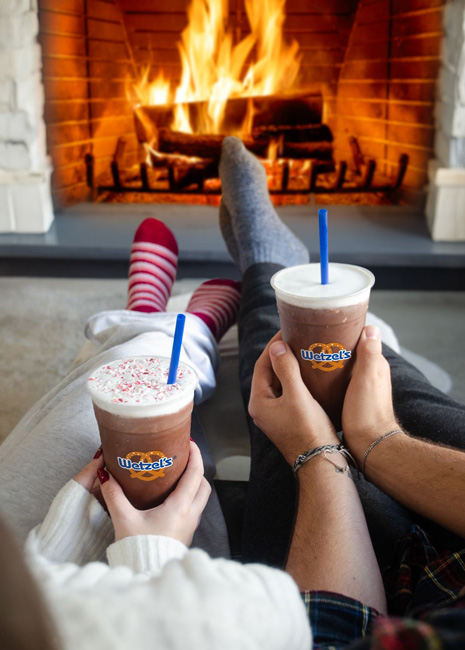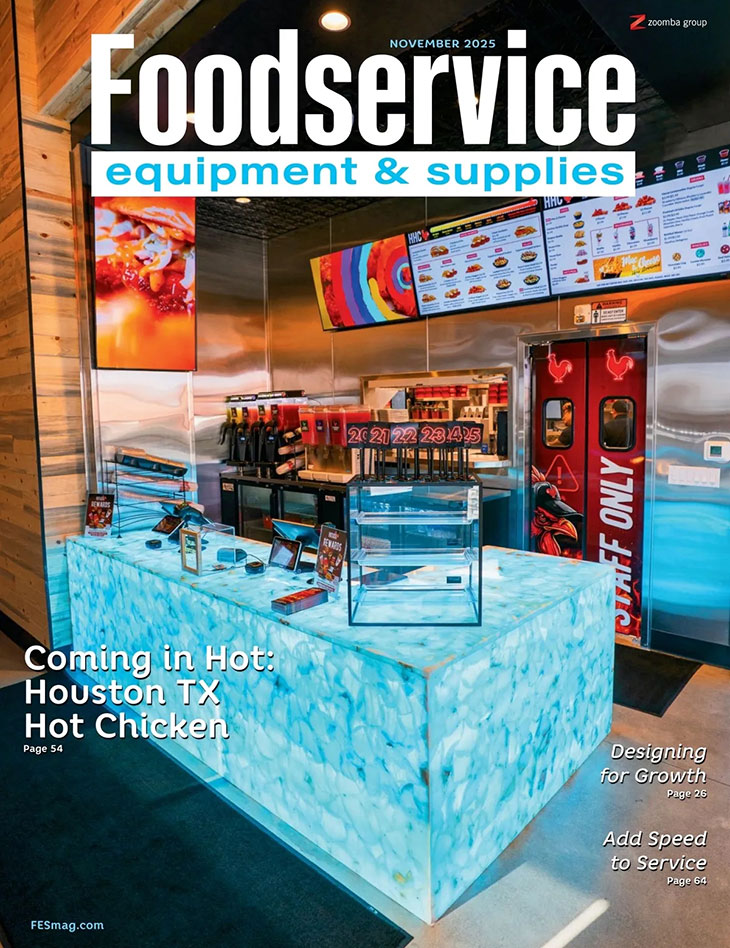The beverage business continues to drive customer visits across a variety of operator segments.
Whether it’s to quench a thirst, to provide a morning or midafternoon pick-me-up or to help wind down at the end of a busy day, a beverage is much more than simply fluid filling space in a container. Served hot or cold or somewhere in between, with flavors ranging from familiar favorites to something completely unexpected, it’s a consumer’s friend, a comfort and in many instances, an absolute necessity.
 SONIC partnered with pop culture icons Paris Hilton and Nicole Richie to develop two new drink options. The Nicole features Dr. Pepper, sweet cream, vanilla flavoring, real strawberries and whipped topping. The Paris features Sprite, dragon fruit syrup, lemon and lime, whipped topping and NERDS candy.But it’s not the same old cup of steaming black coffee with two sugars, no cream, or yesterday’s hot tea with a slice of lemon that have made beverages so popular right now in the foodservice industry. Rather, it’s that companies are willing to produce, and consumers are eager to try a variety of items they may never have tasted before. “Beverages are one of the centers of innovation in the foodservice industry currently, if they’re not the center of innovation,” says Mike Kostyo, vice president of Menu Matters.
SONIC partnered with pop culture icons Paris Hilton and Nicole Richie to develop two new drink options. The Nicole features Dr. Pepper, sweet cream, vanilla flavoring, real strawberries and whipped topping. The Paris features Sprite, dragon fruit syrup, lemon and lime, whipped topping and NERDS candy.But it’s not the same old cup of steaming black coffee with two sugars, no cream, or yesterday’s hot tea with a slice of lemon that have made beverages so popular right now in the foodservice industry. Rather, it’s that companies are willing to produce, and consumers are eager to try a variety of items they may never have tasted before. “Beverages are one of the centers of innovation in the foodservice industry currently, if they’re not the center of innovation,” says Mike Kostyo, vice president of Menu Matters.
“A lot of it can be traced back to the third-wave coffee movement, where you had this explosion of interesting beverage-focused chains and independents opening across the country,” Kostyo adds. “Starbucks alone became the second-largest chain in the country by unit count — to the point where you heard people talking about a Starbucks on every corner. Suddenly, you had all of this competition in the beverage space, which meant there was a ton of innovation in order to compete and stand out. That drove innovation in general, moving beyond coffee to tea-based drinks, iced drinks, smoothies, energy drinks, etc., both in foodservice and at retail. Those dynamics are still at play today as the competition is fiercer than ever.”
One of the consumer segments targeted by beverage providers is one that includes those more likely to try new things and who also have more disposable income. Generally speaking, these consumers were often born between 1997 and 2012. “Gen Z gets the credit — or blame — for a lot of things, but in the case of beverages, their impact is clear. Beverages have really become a key category for younger consumers,” Kostyo says. “For Millennials, it was hanging out at Starbucks and other third-wave coffee shops after school. For Gen Z, it's about those fun, sweet, unique beverages that they like to treat themselves with. That has driven the growth of options like boba tea, high-octane energy drinks, colorful iced matcha or ube lattes, and dirty sodas.”
In addition, consumers continue to show a predilection for more health-conscious foods, and that trend has made its way onto beverage menus, too. “For Millennials, they are reaching that age where they are more health-focused, so they’re looking for those gut health drinks filled with probiotics and fiber, and plant-based milks are becoming the norm, which is driving innovation on the health side,” Kostyo says.
Another way in which beverage consumers are keeping a close watch on their health is by simply not drinking alcohol. According to Datassential, when consumers choose to abstain from alcohol, 81% prefer nonalcoholic beverages such as water, soft drinks or juice, while 19% prefer nonalcoholic beverages that mimic alcohol.
Within the nonalcoholic beverage category, consumers can choose from a wide variety of flavors and styles that tap into the creativity and imagination of providers. “There is a spectrum of indulgence to health that we're seeing in beverages right now,” Kostyo says. “On the indulgent side, you have the super-sweet, sugary, colorful beverages that resonate with younger consumers and that show up on social media, while on the healthier side, you have the plant-based milks and functional probiotic beverages that more health-driven consumers, particularly Millennials, are gravitating toward.
“We're seeing more unique or savory flavors in beverages — whether that's spicy or spicy-sweet options, savory herbs like rosemary or thyme, or botanicals and floral flavors like lavender and elderflower — even at very mainstream chains,” Kostyo continues. “Iced drinks are driving so much of the innovation, so we also see a lot of flavors that work well in an iced format. Fruit flavors like apple and cranberry are now giving pumpkin spice a run for its money on fall and winter beverage menus.”
 Late last year, Wetzel’s Pretzels partnered with chocolate manufacturer Ghirardelli to add a frozen hot chocolate to its beverage menu as a LTO. A peppermint frozen hot chocolate was also available.One of the most popular nonalcoholic drink types is the mocktail. Offering a variety of flavors, these potables have seen a healthy increase in market penetration over the last 12 months.
Late last year, Wetzel’s Pretzels partnered with chocolate manufacturer Ghirardelli to add a frozen hot chocolate to its beverage menu as a LTO. A peppermint frozen hot chocolate was also available.One of the most popular nonalcoholic drink types is the mocktail. Offering a variety of flavors, these potables have seen a healthy increase in market penetration over the last 12 months.
But that doesn’t mean that alcoholic drinks will fade completely. They still appear on menus an average of 30.4 times, according to Datassential. However, the numbers fluctuate dramatically by operator segment. For example, in the fine-dining industry, there are an average of 261.6 adult beverages on menus, mostly thanks to large wine lists. Casual dining comes in second with an average of 85.2 alcoholic beverages on menus. That’s followed by midscale (34.5), QSRs (16.9) and fast casual (15.0).
While consumers gain pleasure from imbibing their favorite beverages, what’s in it for the operators? For starters, beverages remain a key component of the overall dining experience. “If you are an Asian-inspired concept, consumers today may simply expect that you have a boba tea on the menu, or that a taco shop has unique aguas frescas,” Kostyo says.
And beverages are often a key component of an operators’ business model. “Historically, beverage has been a category with excellent margins with lots of upsell opportunities. There’s not a single segment that can’t focus on beverage innovation,” Kostyo says. “Today, you can find unique beverage builds and LTOs at casual restaurants, supermarket cafes, hospital cafeterias, etc. Full-service restaurants have done a particularly good job innovating within the spirit-free space, crafting unique builds with house-made syrups, complex flavor profiles and fun garnishes that earn the higher price point and place on a full-service menu.”
Despite the ubiquitous nature of the beverage business, though, Kostyo still sees plenty of opportunities ahead. “You can craft a unique smoothie line to drive healthy breakfast traffic, showcase colorful sweet drinks to capture Gen Z, create energy or coffee drinks for snacking occasions, add seasonal options as LTOs to generate excitement and marketing opportunities, or add syrups or boosts for a check bump, etc.,” Kostyo says. “But because there is so much competition and innovation in the space, you can't phone it in — you have to take it seriously.”
Top Beverage Trends for 2025
Here are the 10 alcohol trends that Datassential thinks will be most relevant in 2025.
- Beer with a hint of lime
- Candy-flavored beers
- Functional beer (beer with added health benefits such as vitamins, minerals, antioxidants and electrolytes)
- Craft/signature shots
- Tamarind in cocktails
- Ube cream liqueur
- Dirty drink customization (spirits with added cream and sometimes juices)
- Fortified wine cocktails
- Gin-based hard seltzers/canned cocktails
- Vegan fat washing (spirits infused with plant-based fats for a rich, creamy texture)



